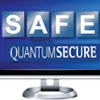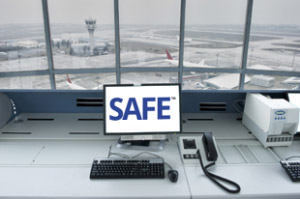
Quantum Secure New Identity Management Software Launches at Friedman Memorial Airport
 Friedman Memorial Airport (SUN), which provides air service facilities to South Central Idaho and the Sun Valley resort area, has become the first airport in the country to implement Quantum Secure’s new SAFE for Aviation v4.5 software suite. Officially launched May 15, the physical identity and access management software solution is expected to save hundreds of man-hours for airport management by streamlining the complete lifecycle of physical identities and automating related processes.
Friedman Memorial Airport (SUN), which provides air service facilities to South Central Idaho and the Sun Valley resort area, has become the first airport in the country to implement Quantum Secure’s new SAFE for Aviation v4.5 software suite. Officially launched May 15, the physical identity and access management software solution is expected to save hundreds of man-hours for airport management by streamlining the complete lifecycle of physical identities and automating related processes.
Daily oversight of security provisions at SUN is handled by the Airport Security Department. Among their many security activities is ongoing supervision of approximately 1000 identities including airport and airline employees, in-house and external (i.e. taxi, cargo) vendors, government employees, hangar owners/associations, sublease tenants, temporary construction workers and more. Per TSA mandates, each individual must undergo a TSA-adjudicated Security Threat Assessment before SUN airport operators can issue any type of personnel identification media. Individuals must be vetted on a continual basis to allow for a comparison of new threat information.
Before Quantum Secure’s SAFE was implemented, SUN’s approach to enacting these requirements was entirely a manual process. The labor-intense activity involved multiple data entries of the same information into the various airport security systems: the Physical Access Control System (PACS), security check system, computer based training systems and biometric fingerprint capture system. Airport personnel were spending more than 90 minutes per person for new enrollments and more than 45 minutes per person for badge renewal procedures.
According to Ajay Jain, Quantum Secure president and CEO, with the SAFE software suite the data is entered only once, and the relevant information flows through to all applicable systems and business processes. The software allows SUN operators to perform new enrollments in less than 15 minutes per person, including all related processing such as document scanning and biometric registration. SAFE can also perform renewals in less than 10 minutes.
“Given the complexity of security requirements in an airport environment, timely and effective identity management procedures are a necessity,” said Jain. “SAFE for Aviation is a holistic and judicious approach to addressing those needs.”
The SAFE system was also able to streamline the procedure for completing the mandatory reverse audits that were previously being completed manually through the U.S. Postal Service. SAFE can automate the process, reducing the expected time for SUN staff to initiate a full or partial audit to 10 minutes. For added convenience, the audits can be scheduled to run on a quarterly or half-yearly basis.
SUN’s security workflow system, with which SAFE is integrated, includes security checks through TSA’s Transportation Security Clearinghouse; SSi computer based training systems; Safran MorphoTrust biometric fingerprint platform; and automated provisioning and de-provisioning to Lenel’s OnGuard PACS after security checks and training pre-requisites have been completed.
SAFE for Aviation comes with pre-defined policies, workflows and procedures for issuing badge credentials, granting/revoking access to airport facilities while simplifying adherence to TSA and FAA regulations, audits and security directives, minimizing insider threats and promoting greater operational security. It automates processes for conducting background checks for new airport workers, obtaining security clearances for access to secured locations from the governing bodies like the TSA, creating flexible self-service access rights to allow approved parties to enroll their own employees and subcontractors and grant them physical access rights, and complying with and enforcing security directives like SD-1542-04-08G or SD-1542-04-08F.
“SAFE is a powerful productivity investment that delivers new capabilities and value to airport operations,” added Jain. “We are confident that SUN’s implementation of SAFE will lead to a more secure environment.”